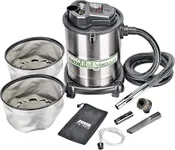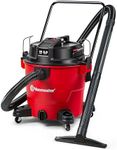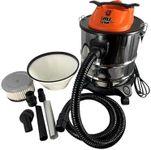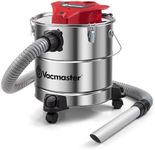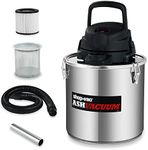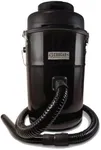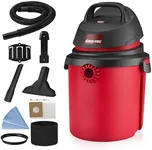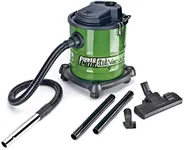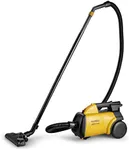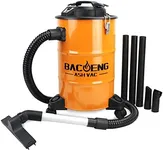Buying Guide for the Best Fireplace Vacuums
Choosing the right fireplace vacuum is essential for maintaining a clean and safe fireplace. A fireplace vacuum is specifically designed to handle the fine ash and debris that regular vacuums cannot. When selecting a fireplace vacuum, it's important to consider several key specifications to ensure you get a product that meets your needs and performs effectively.Suction PowerSuction power determines how effectively the vacuum can pick up ash and debris. This is important because a vacuum with insufficient suction power may leave behind particles, making cleaning less efficient. Suction power is usually measured in watts or air watts. For light use, a vacuum with lower suction power (around 500-800 watts) may suffice. For more frequent or heavy-duty use, look for a vacuum with higher suction power (over 800 watts). Consider your cleaning frequency and the amount of ash your fireplace produces to choose the right suction power.
Filtration SystemThe filtration system is crucial for trapping fine ash particles and preventing them from being released back into the air. This is important for maintaining indoor air quality and protecting your health. Look for vacuums with HEPA filters, as they are highly effective at capturing small particles. Some vacuums also have multi-stage filtration systems for added efficiency. If you or anyone in your household has allergies or respiratory issues, a vacuum with a high-quality filtration system is essential.
CapacityCapacity refers to the size of the vacuum's collection container. This is important because a larger capacity means you can clean more ash before needing to empty the container. Capacities can range from small (around 1 gallon) to large (over 5 gallons). For occasional use or smaller fireplaces, a smaller capacity may be sufficient. For larger fireplaces or more frequent use, a larger capacity will be more convenient and reduce the frequency of emptying.
Hose and Nozzle DesignThe design of the hose and nozzle affects the vacuum's ease of use and ability to reach tight spaces. A flexible, heat-resistant hose is important for maneuverability and safety. Nozzles with narrow tips can help reach into corners and crevices. Consider the layout of your fireplace and the types of spaces you need to clean. If your fireplace has many tight spots, look for a vacuum with a versatile hose and nozzle design.
Build Quality and MaterialsThe build quality and materials of the vacuum determine its durability and ability to handle hot ash. This is important for ensuring the vacuum lasts and performs well over time. Look for vacuums made from metal or high-quality, heat-resistant plastics. If you frequently clean hot ash, a vacuum with a metal body and heat-resistant components is essential. For occasional use with cooled ash, a high-quality plastic vacuum may be sufficient.
Noise LevelNoise level refers to how loud the vacuum is during operation. This is important for comfort, especially if you are sensitive to noise or will be using the vacuum frequently. Noise levels are usually measured in decibels (dB). Quieter vacuums typically operate at around 60-70 dB, while louder models can exceed 80 dB. Consider your tolerance for noise and the environment in which you will be using the vacuum. If you prefer a quieter operation, look for models with lower noise levels.
